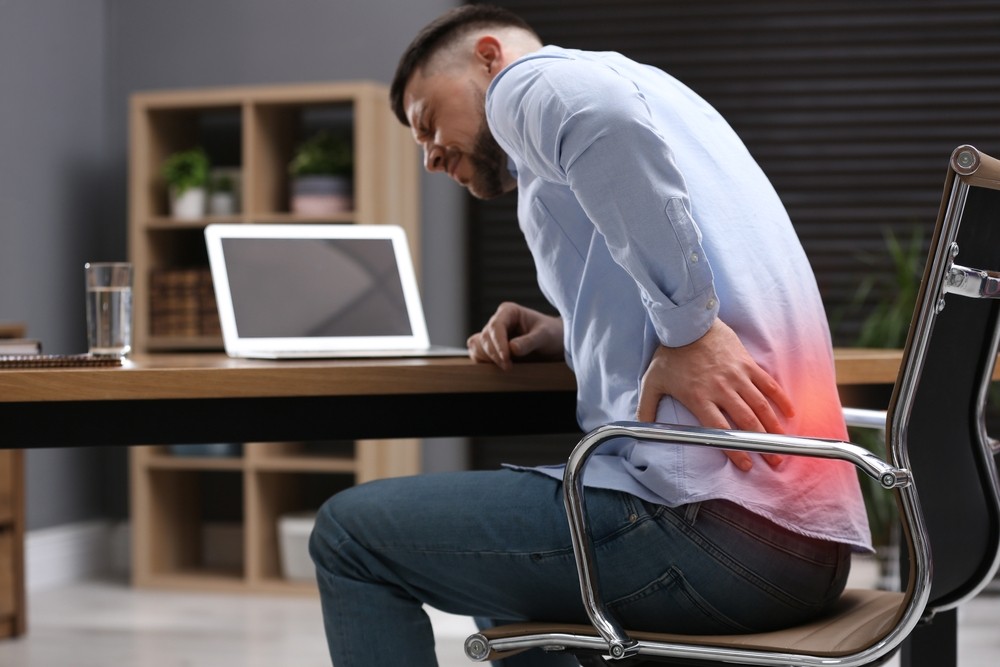Maintaining good posture is essential for overall health and well-being, as it plays a crucial role in supporting the body’s musculoskeletal system. Proper posture helps keep the spine aligned, reducing strain on muscles, ligaments, and joints. In contrast, poor posture can lead to a variety of health issues, including chronic back pain, neck discomfort, and even reduced lung capacity. Many individuals experience these problems due to prolonged sitting, incorrect standing or walking habits, or poor ergonomics in their daily activities.
The Impact of Poor Posture on Back Pain
Chronic back pain is one of the most common consequences of poor posture. When the spine is not aligned correctly, extra pressure is placed on the muscles and vertebrae, leading to tension, stiffness, and inflammation. Over time, this can result in more severe conditions such as herniated discs, sciatica, and degenerative spinal disorders. Slouching, hunching over a desk, or standing with an arched lower back can all contribute to these issues, making it essential to adopt posture correction strategies.
The Importance of Posture
Good posture involves training your body to stand, walk, sit, and lie in positions where the least strain is placed on muscles and ligaments. Poor posture can lead to a misalignment of the spine, causing pain, discomfort, and potential long-term damage. Besides back pain, poor posture can also result in headaches, fatigue, and digestive issues.
Given these consequences, it’s imperative to adopt posture correction methods. These methods bolster back health and pave the way for a pain-free life, facilitating everyday activities and enabling individuals to remain active and engaged.
Posture Correction Methods
Effective posture correction doesn’t necessitate expensive equipment or elaborate procedures. Here are several methods to consider:
1. Ergonomic Furniture
Investing in ergonomic furniture can be a game-changer for those spending long hours working at a desk.
- Ergonomic Chairs: These chairs are specifically designed to support the natural curve of the spine. Features like adjustable seat height, lumbar support, and armrests contribute to maintaining good posture. Even though some ergonomic chairs can be expensive, there are affordable options on the market that provide sufficient support without premium costs.
- Adjustable Desks: Standing desks or adjustable desks allow users to alternate between sitting and standing positions, thereby reducing the strain on the back. Several economical standing desk converters can sit atop a traditional desk, offering a cost-effective solution to posture improvements.
2. Core Strengthening Exercises
A strong core is crucial for supporting the spine and maintaining good posture. There are a variety of exercises that fortify core muscles, many of which require no financial investment.
- Planks: Planks are highly effective in building core strength. By holding your body in a straight line, the core muscles are engaged, supporting the back and reducing strain.
- Bridges: Lying on your back with knees bent and feet flat, lifting your hips towards the ceiling works the lower back, glutes, and abdominal muscles, essential components for posture.
- Yoga and Pilates: These practices focus on strength, flexibility, and posture alignment. Numerous free or affordable classes are available online, providing a budget-friendly way to enhance core strength.
3. Posture-Correcting Devices
There is an array of posture-correcting devices available, each designed to gently encourage proper alignment. Ranging in price, many devices are reasonably priced and effective for consistent use.
- Posture Braces: These wearable devices gently pull the shoulders back, fostering a natural alignment of the spine. Typically lightweight and discreet, they can be worn beneath clothing. Posture braces are available at multiple price points, ensuring options for any budget.
- Back Support Cushions: These cushions can be added to any chair to provide additional lumbar support, promoting good posture and comfort. High-quality cushions can be purchased at a low cost, making them an excellent option for budget-conscious consumers.
- Posture Reminder Apps: Technology has introduced some innovative solutions for posture improvement. Free or affordable apps can be installed on smartphones to remind users to check their posture and engage in corrective activities throughout the day.
4. Mindfulness Practices
Being mindful of posture and body alignment throughout the day is a powerful tool in preventing back pain. This method requires consistent conscious effort rather than a financial commitment.
- Body Scanning: Regularly assessing your body position can help you notice unnatural alignments. Pausing every few hours to conduct a mental body scan ensures that corrective measures can be taken promptly.
- Breathing Techniques: Proper breathing can facilitate better posture. Deep abdominal breathing encourages an upright position, naturally supporting the spine.
- Habit Formation: Making a habit of correcting posture whenever you become aware of slouching can, over time, become second nature and effectively reduce back pain.
5. Physical Therapy and Professional Guidance
While this option can be more expensive, initial consultations or occasional sessions with a physical therapist or chiropractor can be invaluable. They can provide personalized assessments and recommendations to correct posture and alleviate pain.
- Consulting a Professional: A therapist can pinpoint specific areas needing improvement, developing a targeted correction plan.
- At-Home Exercises: Many professionals offer exercises that can be performed at home. This can minimize the number of sessions required and reduce costs overall.
6. Daily Lifestyle Changes
Implementing a few lifestyle adjustments can have a significant impact on posture and back health. Often, these changes are minimal or cost-free, yet substantial in improving posture.
- Footwear: Choose supportive shoes, as heels or unsupportive footwear can contribute to poor posture.
- Sleep Habits: Opt for a mattress and pillow that proper support your spine. This may involve an initial investment but can significantly affect posture and health over the long run.
- Regular Breaks: Incorporate short breaks to stand, stretch, and move. Simple stretching can mitigate the adverse effects of prolonged sitting or standing.
Adopting a mix of these methods can assist in achieving and maintaining good posture. They collectively work to reduce strain on your back and can noticeably decrease back pain over time. With options ranging from zero cost to affordable investments, these methods make improved posture accessible to everyone.
The journey toward better posture is unique to each individual. What works for one person may not be effective for another, underscoring the importance of trying different methods to find the most effective solution. By integrating various techniques, you can craft a comprehensive plan tailored to your needs and budget, providing relief from back pain and fostering a healthier spine.



